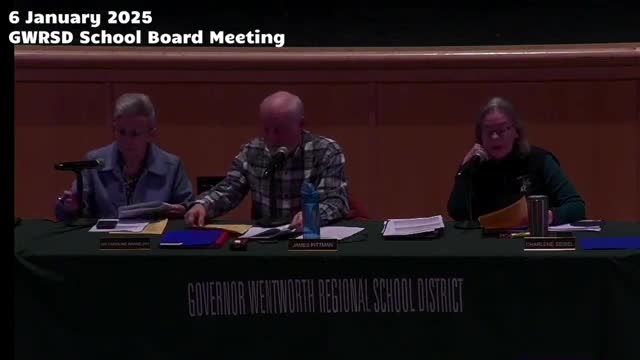School Board Divided Over Turf Field Replacement Amid Safety Concerns and Legislative Pressure
January 11, 2025 | Governor Wentworth Reg School District, School Districts, New Hampshire
This article was created by AI summarizing key points discussed. AI makes mistakes, so for full details and context, please refer to the video of the full meeting. Please report any errors so we can fix them. Report an error »

In a recent meeting of the Governor Wentworth Regional School District (GWRSD) School Board, a heated discussion emerged regarding the potential replacement of a 12-year-old turf field. The meeting, held on January 11, 2025, revealed a divide among board members about the safety and necessity of replacing the aging turf with another synthetic surface.
Concerns were raised by board member Shirley, who highlighted conflicting information about the field's condition. While some reports suggested the turf could last another two years, others indicated an urgent need for replacement. The absence of Gmax testing—a method used to assess the safety of turf surfaces—since the field's installation further fueled worries about student safety, particularly regarding injuries like whiplash and concussions.
Shirley expressed her apprehension about replacing the current turf with another potentially harmful product, citing a growing movement among states like California and New York to ban or restrict synthetic turf in favor of natural grass. She emphasized the importance of considering alternatives, such as sod, and questioned the allocation of approximately $800,000 designated for the turf replacement.
In contrast, board member Jim Pitkin defended the decision to fund a new turf field, arguing that existing studies indicate the current turf is safe. He expressed disappointment over the divided vote, suggesting that rejecting funding for a new field could inadvertently lead to the deterioration of the existing one.
The meeting also addressed other financial matters, including a proposal to allocate $150,000 for repairs and improvements across various school facilities within the district. This motion received unanimous support from the board, reflecting a commitment to maintaining the district's infrastructure.
As the board navigates these discussions, the future of the turf field remains uncertain, with implications for student safety and the district's financial priorities hanging in the balance. The outcome of this debate will likely resonate beyond the meeting room, influencing how the community views the management of its school facilities and the well-being of its students.
Concerns were raised by board member Shirley, who highlighted conflicting information about the field's condition. While some reports suggested the turf could last another two years, others indicated an urgent need for replacement. The absence of Gmax testing—a method used to assess the safety of turf surfaces—since the field's installation further fueled worries about student safety, particularly regarding injuries like whiplash and concussions.
Shirley expressed her apprehension about replacing the current turf with another potentially harmful product, citing a growing movement among states like California and New York to ban or restrict synthetic turf in favor of natural grass. She emphasized the importance of considering alternatives, such as sod, and questioned the allocation of approximately $800,000 designated for the turf replacement.
In contrast, board member Jim Pitkin defended the decision to fund a new turf field, arguing that existing studies indicate the current turf is safe. He expressed disappointment over the divided vote, suggesting that rejecting funding for a new field could inadvertently lead to the deterioration of the existing one.
The meeting also addressed other financial matters, including a proposal to allocate $150,000 for repairs and improvements across various school facilities within the district. This motion received unanimous support from the board, reflecting a commitment to maintaining the district's infrastructure.
As the board navigates these discussions, the future of the turf field remains uncertain, with implications for student safety and the district's financial priorities hanging in the balance. The outcome of this debate will likely resonate beyond the meeting room, influencing how the community views the management of its school facilities and the well-being of its students.
View full meeting
This article is based on a recent meeting—watch the full video and explore the complete transcript for deeper insights into the discussion.
View full meeting
